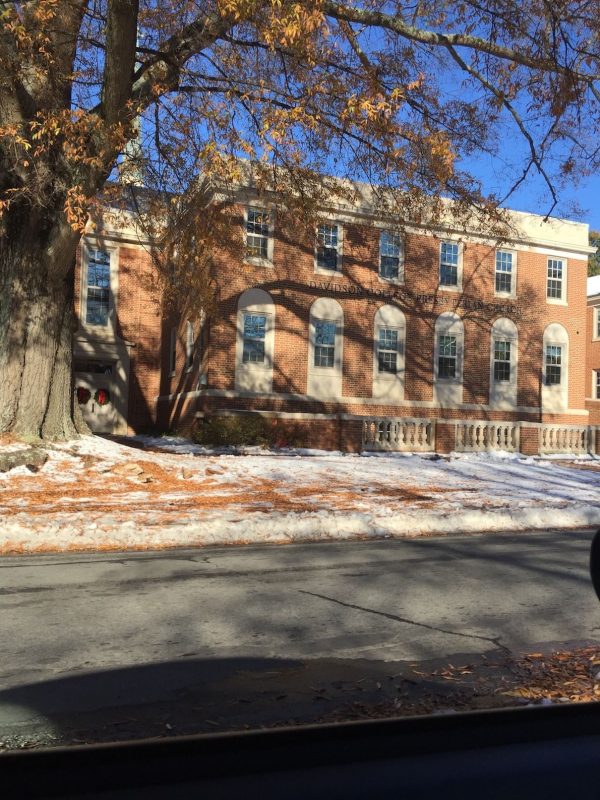What do you want to be when you grow up? I’m guilty of asking this question to my kids. But the truth is, it’s hard to figure out what you want to be as a kid. As an eighteen-year-old entering college, it’s still pretty difficult. We share words of wisdom with freshmen in college like “follow your passion” but that is terrible advice, according to Cal Newport, author of How to Be a High School Superstar.
First of all, how many of us have passions? If we do, it’s obvious what we’ll major in. If we don’t, how are we supposed to develop said passions?
When we send our kids to college, we’re often making a huge financial investment in their futures, or asking them to take on massive amounts of debt. Yet we do so with very little forethought or planning into what, specifically, they’ll get out of the process.
Sure, we know that four years at a liberal arts university will teach the next generation higher thinking skills, give them writing skills, and generally expose them to thinking that will help them in the workplace (and maybe help them learn to hold their own at parties), but do we give enough thought and planning to how they’ll produce a return, in the form of a salary, on the investment of college?
The Chilean model
When I lived in Chile, where I moved shortly after I finished my own university education, I was surprised by how pragmatic Chileans were about their educations.

According to the Brookings Institution, Chileans paid $7,654 annually for public college in 2015, adjusted for purchasing power, while Americans paid $8,202 (this is obviously tuition only). Chileans’ private school cost was slightly lower, at $7,156, while Americans pay an average of $21,189.
While Chileans pay less for private college than Americans, they still treat their time at university as an investment. Chilean colleges are set up differently than in the US. There are few liberal arts colleges (or at least that was the case when I lived there in the early ‘Naughts). Instead, college freshmen pick their majors when they start school.
In fact, they are admitted to majors based on their results from the national high school exam that all Chileans take their senior year. If they do well, they’re admitted into “better” majors. Better majors include engineering, medicine, law, and IT, among others.
Almost everyone I met was studying some type of engineering: civil, mechanical, chemical, electrical. Even at the Business School of the private college where I worked, students studied ingeniería comercial, business engineering.
From day one, Chilean students are taking classes in their field. After all, that’s why they’re in college–to learn how to perform a career.
What are you paying for?
While I haven’t looking into the efficacy of the University model versus the liberal arts model, I do think that Americans, as a whole, could do a better job focusing on return on investment of a particular degree.
A survey conducted by GoBankingRates found that one of the biggest regrets graduates had was in their choice of major. 17.5% regretted the major they had chosen. An additional 10.6% regretted taking out student loans.
Another story: I went to college with a friend who chose our fair school as a reach choice, meaning she got zero aid to attend. With the sticker price hovering around $100,000 after four years, she took on a lot of debt to get her degree, which was a B.S. in political science.
After college, she never worked in her major, instead choosing to become a stay-at-home mom (hey, that was my choice too–commendable for your kids, if not your finances). She told me, when we got our oldest kids together for the first time, that she’d finish paying off her student loans when her daughter went to college.
The Data
This week, the Department of Education released a preliminary set of data showing the average amount of debt students from each major carry on leaving college. Because the data are new, there’s not a lot of discussion yet about the results. But they contain enough eye-opening statistics to help make the point: for Columbia grads, median debt in 2016-2017 for Neurobiology majors was $27,000, but for Ecology, Evolution, Systematics, and Population Biology median debt was $68,313. Mental and Social Health Services at Sarah Lawrence graduated with an average of $48,250. Ouch.
The other side to the coin is what these majors will pay out, over a lifetime of earnings. If I knew, for example, that I would earn an average of $75,000 starting salary with an Ecology degree, then perhaps that $68K in debt would be more palatable than the $48K of debt for a Social Services degree that would only pay out a $30K starting salary.
The New York Times opined: “Everyone knows that different majors have different economic payoffs. Social workers earn less than chemical engineers, for example. But federal laws that regulate college success don’t account for that. Instead, they average results across the university. People don’t have a good way of seeing how big those differences are within a particular university, let alone comparing programs across universities.”
They went on to note that there’s often a huge difference within a university on starting salaries. You might earn $35,000 with an education major and six figures with an IT degree. This is something we need to pay more attention to, not just the average starting salary by university.
What to do
How to create systemic change in our higher education system is way beyond the scope of this blog. Instead, I’d like to focus on what I plan to do with my children.
Taking a cue from Cal Newport, Mr. ThreeYear and I plan to help them discover what interests them by giving them plenty of free time to explore different interests that may crop up between now and graduation. Newport’s theory is that passion comes after ability–that once youth are exposed to a certain field of study or hobby, and are given time and space to learn about and improve upon their skills, passion will come as a result of the accomplishment they feel from having become more proficient in that particular area.
Little ThreeYear likes building and creating things with his hands, so we expect he’ll get interested in something along those lines, while Junior ThreeYear has always had more esoteric interests, such as WWII battles and black holes. I hope that they’ll naturally gravitate towards high school jobs, clubs, or projects that stem from one of these interests, in order to develop some background knowledge and skills.

As they’re choosing colleges, we’ll be helping them determine how they’ll make money based on their particular cultivated interests and skills. Junior ThreeYear has said he wants to go into medicine for the last few years, so if that’s still his plan, I imagine helping him find an opportunity to tail a doctor during the summer or perhaps work in a biology lab cleaning petri dishes.
A friend of ours has a daughter in the wildly expensive RIT. She’s majoring in industrial design. She won’t, very fortunately, graduate with any debt. But what about those students who are?
The average debt for RIT graduates is $25,088. What majors make sense for them?
The median, full-time, entry-level salary for industrial design majors, the major of our friend’s daughter, is $41,000 (RIT publishes a list of data for average earnings for all of its major, self-reported). While this is a great major for those interested in drawing and design (as is my friend’s daughter), perhaps those with similar skills, graduating with debt, might consider game design and development (with a tony starting salary of $70,000), or even graphic design, with a starting salary of $43,750.
Many of the majors that our generation think of as prestigious are now antiquated. Computer technology grads from RIT earn a jaw-dropping $100,000 average entry level salary. And that’s with a 4-year, Bachelor of Science degree.
The trouble with passion
For some reason, our society sees choosing a career based on pay as wildly inappropriate. That’s not what I’m advocating, by the way.
What I’m advocating is that if we send our kids to colleges that cost an arm and a leg, and we allow them to graduate with massive student debt, then we need to be pragmatic about how they’re going to pay off that debt.
Millennials are currently way behind Gen Xers and Boomers in net worth. That’s no coincidence. They also graduated college with way more student debt than previous generations. While Millennials are better educated than Gen Xers, according to the Wall Street Journal, they still own an average student loan balance, as of 2017, of $10,600, more than twice that of Gen Xers a generation previous.
And remember that most Millennials are now in their 30s, with the oldest members of that generation turning 38 this year. So they’ve had as many as seventeen years to pay their student loan balances down.
How to help
Part of our strategy for our kids is helping steer them towards a less-expensive state school, then helping them pick a major that will, in fact, be a good return on investment for the money we spend on a university.

When I went to college, I had exactly one appointment with a career counselor, late in my junior year.
That’s not enough. I want to encourage my kids to think about how what they’re learning will translate into a job they can turn into a career. Because their career will probably be their largest source of earnings in their lifetime, it makes sense to spend more than one thirty-minute session on how to turn their degrees into a well-paying job.
Of course, I’ve argued before that college isn’t necessarily the best financial choice for high school seniors, and this country’s fascination with higher education is undoubtedly hampering members of our youth who can’t afford college or aren’t ready for its academic rigors.
If either of our boys expresses an interest in an alternate route, like trade school, we’re open to it. I admit that I have a blind spot when it comes to college, because that’s the path I took, but I have also seen that there are many ways to train for a career, so I’m working to be more open-minded about my kids’ options.
Have you ever calculated the return on investment of your college degree?



It is an interesting notion to opt for post secondary education immediately after high school. The same holds for the college to grad school transition etc. There are alternatives that may influence one’s thought processes going forward.
I wish we would adopt the “gap year” philosophy in the US. It’s such a great concept and kids I know who took a gap year before starting college were so much more mature and focused.
I took out a total of around $40K in loans for my initial engineering bachelor’s degree, when I graduated back in the mid 90’s. That degree opened the door to a career in which I currently make north of $250K/yr. I think the ROI was pretty good, although I also think that it is hard to calculate – you’d also have to factor in the salary I would have made in whatever other career I would have had if I decided not to go to college, along with the earnings I would have made during the 4 years I was in school. But even after you factor all of that in, I think the cost-benefit analysis is worth it.
Like you, we are attempting to control the cost of college by steering our kids towards lower-cost state schools, and also by encouraging them to do well in school to help get merit scholarship money. Our kids will not get any need-based financial aid due to my family’s income, which I get from a equity standpoint – to a point. That said, I’m not so sure it is reasonable to assume that higher income families can reasonably be expected to pay north of $250K for private college costs out of pocket.
The current rules around financial aid really penalize average-kids (ie no merit money) from higher-income families, as it pretty much rules out the idea of private college school. This is also starting to distort the market a bit – competition to get into public colleges is becoming more and more fierce, due to the dramatically lower costs relative to private school.
One thing that is never factored into the student debt stories is the amount of debt that is taken on indirectly. In my case, my parents borrowed the $40K on my behalf, and I was expected to pay that back in full (which I did of course). In the story you referenced, I would have shown up in the data with almost no debt – even though I actually had debt that would be in the 6-figures if converted to today’s dollars.
All that said – yes, I totally agree with you, the ROI of college should absolutely be a significant factor in college selection. Maybe that wasn’t the case many years ago, but at the current costs it absolutely has to be a factor!